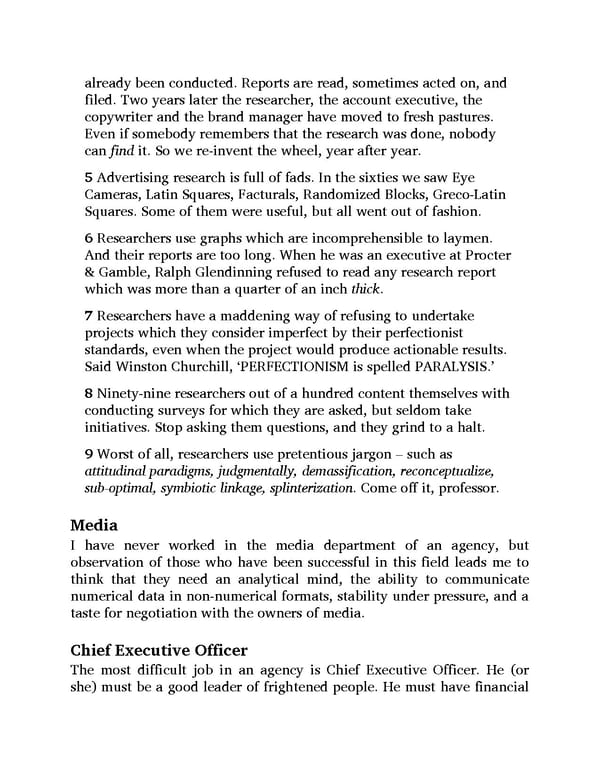already been conducted. Reports are read, sometimes acted on, and filed. Two years later the researcher, the account executive, the copywriter and the brand manager have moved to fresh pastures. Even if somebody remembers that the research was done, nobody can find it. So we re-invent the wheel, year after year. 5 Advertising research is full of fads. In the sixties we saw Eye Cameras, Latin Squares, Facturals, Randomized Blocks, Greco-Latin Squares. Some of them were useful, but all went out of fashion. 6 Researchers use graphs which are incomprehensible to laymen. And their reports are too long. When he was an executive at Procter & Gamble, Ralph Glendinning refused to read any research report which was more than a quarter of an inch thick. 7 Researchers have a maddening way of refusing to undertake projects which they consider imperfect by their perfectionist standards, even when the project would produce actionable results. Said Winston Churchill, ‘PERFECTIONISM is spelled PARALYSIS.’ 8 Ninety-nine researchers out of a hundred content themselves with conducting surveys for which they are asked, but seldom take initiatives. Stop asking them questions, and they grind to a halt. 9 Worst of all, researchers use pretentious jargon – such as attitudinal paradigms, judgmentally, demassification, reconceptualize, sub-optimal, symbiotic linkage, splinterization. Come off it, professor. Media I have never worked in the media department of an agency, but observation of those who have been successful in this field leads me to think that they need an analytical mind, the ability to communicate numerical data in non-numerical formats, stability under pressure, and a taste for negotiation with the owners of media. Chief Executive Officer The most difficult job in an agency is Chief Executive Officer. He (or she) must be a good leader of frightened people. He must have financial
 Ogilvy on Advertising Page 52 Page 54
Ogilvy on Advertising Page 52 Page 54